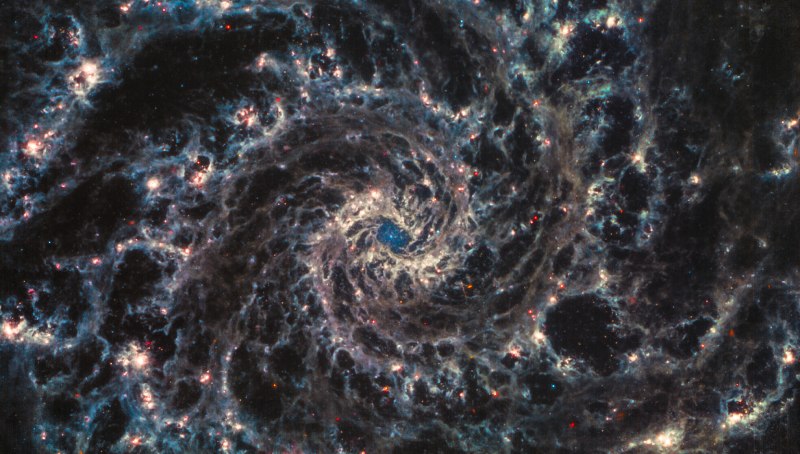A beautiful image of a large region in space where new suns are being formed in a massive cluster has been taken by the James Webb Space Telescope.
A satellite galaxy of the Milky Way is the star-forming complex known as N79, which is situated in the Large Magellanic Cloud (LMC). Using images from Webb’s Mid-InfraRed Instrument (MIRI), this nebula-a large area of ionized interstellar atomic hydrogen-shows a universe spanning around 1,630 light-years.
N79 is thought to be a younger brother of 30 Doradus, often known as the famous Tarantula Nebula, which has also been the focus of recent observations by Webb. Surprisingly, studies show that during the last half-million years, N79’s star production efficiency has increased by two compared to that of the Tarantula Nebula.
The image centers on N79’s southernmost region, designated N79 South (S1), which is home to one of the three enormous molecular cloud complexes. This bright patch is surrounded by a characteristic ‘starburst’ pattern, which is a collection of diffraction spikes present in telescopes like as Webb that use mirrors to collect light.
These patterns appear around extremely brilliant and compact objects and are caused by the hexagonal symmetry of Webb’s 18 primary mirror segments.
Since shorter wavelengths would normally be absorbed or scattered, larger wavelengths of light caught by MIRI provide an amazing discover of the burning gas and dust of N79, looking further into the clouds. In addition, protostars that are still enveloped in the nebula are visible from this mid-infrared viewpoint.
Because regions such as N79 have a chemical makeup similar to that of the massive star-forming areas seen in the early cosmos when star formation was at its peak, astronomers are very interested in these locations.
N79 provides a unique insight into the past, in contrast to the current star-forming areas of the Milky Way, which are less frequent and have a distinct chemical composition. Astronomers may now compare the star formation processes in N79 with those in galaxies far away from the early cosmos thanks to the James Webb Space Telescope.
The purpose of this broader Webb mission is to examine the evolution of circumstellar disks and envelopes around developing stars at different masses and evolutionary stages. This includes the observations that have been made. Scientists expect to see planet-forming dust disks around Sun-mass stars in the LMC for the first time because of Webb’s unmatched sensitivity.
Our knowledge of the universe and the beginnings of stars and planetary systems could be further enhanced by the new information.
Topics #galaxy #James Webb James #Milky Way galaxy #news #Space #telescope #universe #Webb











